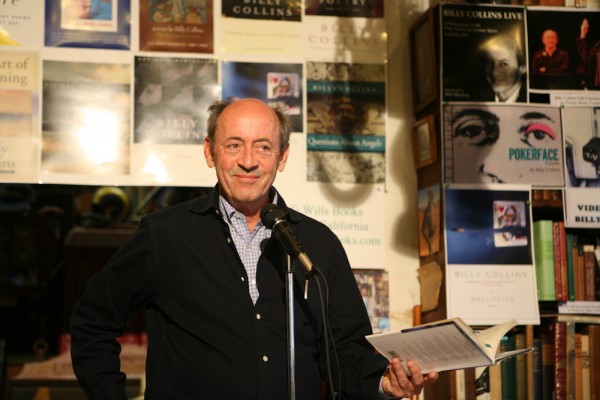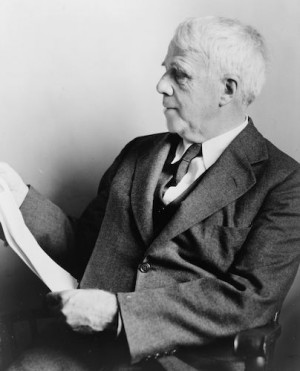Is there any poet like Robert Frost today? Billy Collins comes close. Unlike so many poets—but very much like Frost—Collins writes work that sells. He was the given the title of U.S. poet laureate and is one of the rare poets featured in popular media, from PBS Newshour, to Prairie Home Companion, to CNN.
With that, I ask this question: What makes Collins’ poetry so captivating to so many?
The answer may lie in the example of Frost, who also had a large public role. In 1961, Frost became the first poet ever invited to read at a presidential inauguration, for John F. Kennedy. His public fame rested on his image as a benign New England sage. Cultural critic Lionel Trilling objected to that view, saying of Frost in 1959, “He is not the Frost who reassures us by affirmations of old virtues, simplicities, pieties, and ways of feeling: anything but … I regard Frost as a terrifying poet.” Trilling found in Frost’s poetry existential questions seething with darkness.
Collins was appointed poet laureate shortly before September 11, 2001. Today, as we live in a post-9/11 society, we reflect upon the events of that day—and the years that have followed—realizing that our world is far too familiar with danger and dread.
Hence Collins’ appeal. While Frost’s poetry consists of fear and terror where one would expect happiness and joy, Collins has an uncanny ability to find a small glimmer of light, love, and hope in the most basic tokens of our dark times: Silverware, a bird, lawn chairs, and teenage girls who cannot help but say, “Oh, my God” to everyone about everything.
Collins populates his poems with lonely figures straight out of an Edward Hopper painting, imbuing them with simple good will and humor. His poem, “The Chairs That No One Sits In,” would be an example of anomie and bleakness, particularly because he tells us that, “You never see anyone/ sitting in these forlorn chairs,” if not for stanzas such as these:
It may be none of my business,
but let us suppose one day
that everyone who placed those vacant chairson a veranda or a dock sat down in them
if only for the sake of remembering
what it was they thought deservedto be viewed from two chairs,
That imaginative turn takes what should be an oppressively sad poem and transforms it into a cause for wonder as he imagines people in the two chairs, a man and a woman, and tells us that, “there is only the sound of their looking.” This, Collins argues, is the very definition of poetry. In his poem called “Poetry,” he con-cludes the following of himself and his fellow poets:
We are busy doing nothing—
and all we need for that is an afternoon,
a rowboat under a blue sky,and maybe a man fishing from a stone bridge,
or, better still, nobody on that bridge at all.
Collins unabashedly celebrates poetry for its ability to make readers pause, celebrate, and engage in anything and everything, from the most awful to the most seemingly trivial—until, at a poems’ root, it yields surprise, and that glimmer of light we need so much.
In his poem “Baby Listening,” Collins imagines that a hotel service for “baby listen-ing” is offering babies who will listen to guests. In fact, the service is for families who would like staff to listen in on a sleeping baby while the parents go out to the hotel restaurant. As he writes: “Baby listening—not a baby who happens to be listening/ as I thought when I first checked in.” He adds: “Lucky for some of us/ poetry is a place where both are true at once/ where meaning only one thing at a time spells malfunction.”
In the universe of poetry that Collins creates, the poet fails only when he or she becomes too simple. Like Frost, Collins is deceptive. But unlike Frost, Collins, in a dark time, lets his readers know the secret of how and where to find light.
Jonathan N. Barron is an associate professor of English at the University of Southern Mississippi, author of the recent How Robert Frost Made Realism Matter (University of Missouri Press, 2015), and editor-in-chief of The Robert Frost Review, a scholarly journal.
*Lead photo courtesy of Marcelo Noah/Flickr. Interior photo by Fred Palumbo/Flickr.











